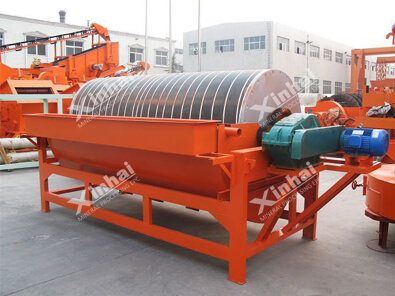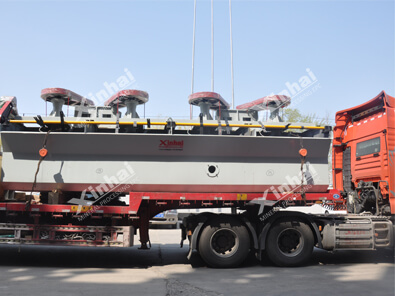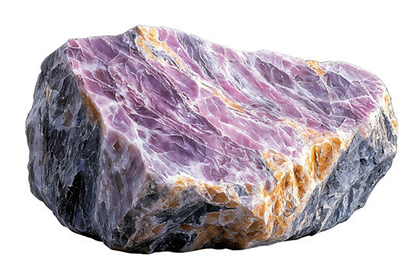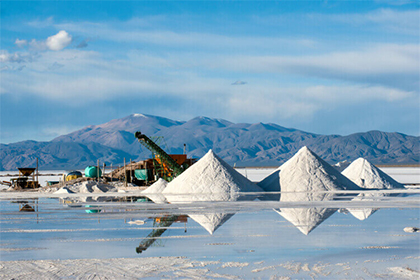The Comprehensive Guide to Nickel Processing
 Essow
Essow
 Jan 19, 2024
Jan 19, 2024
 6692
6692
If you want to know more details about equipment, solutions, etc, please click the button below for free consultation, or leave your requirements!
Nickel, a versatile and valuable metal, plays a critical role in various industries, from stainless steel production to battery manufacturing. As the demand for nickel continues to rise, understanding the nickel processing process becomes crucial. This comprehensive guide aims to provide a detailed overview of the nickel processing journey, from ore extraction to the production of finished products. By exploring the different stages involved, we will shed light on the techniques, challenges, and advancements in the nickel processing industry.
01 Nickel Usage in Batteries and Other Applications
BackNickel plays a crucial role in various applications due to its unique properties, such as high corrosion resistance, excellent heat resistance, and good electrical conductivity. One of the significant applications of nickel is in batteries, particularly in rechargeable batteries. Additionally, nickel finds use in other industries and applications as well. Here's more information about nickel usage in batteries and other applications:
1. Batteries
Nickel is widely utilized in rechargeable batteries, including:
1) Nickel-Cadmium (NiCd) Batteries: NiCd batteries have been used for decades in applications such as portable electronics, cordless power tools, and emergency backup systems. They offer high energy density, reliable performance, and long cycle life. However, their usage has decreased due to environmental concerns associated with cadmium.
2) Nickel-Metal Hydride (NiMH) Batteries: NiMH batteries have gained popularity as a replacement for NiCd batteries. They are used in applications such as hybrid electric vehicles (HEVs), consumer electronics, and medical devices. NiMH batteries offer higher energy density than NiCd batteries and are considered more environmentally friendly.
3) Lithium-Ion (Li-ion) Batteries: Nickel is used in the cathode of lithium-ion batteries, which are widely used in portable electronics, electric vehicles (EVs), and energy storage systems. Nickel-based cathode materials, such as nickel-cobalt-aluminum (NCA) and nickel-manganese-cobalt (NMC), provide high energy density and improved performance.

(Nickel Ore)
2. Stainless Steel Production
Nickel is a vital component in the production of stainless steel. Stainless steel, which contains varying amounts of nickel, chromium, and other elements, is highly resistant to corrosion, heat, and wear. It finds extensive use in industries such as construction, automotive, aerospace, food processing, and medical equipment.
3. Alloys and Superalloys
Nickel is alloyed with other metals to enhance their properties and create specialized alloys for specific applications. Nickel-based alloys, known as superalloys, exhibit exceptional strength, heat resistance, and corrosion resistance at high temperatures. Superalloys are used in gas turbines, jet engines, power generation, and other demanding applications that require excellent performance in extreme conditions.
4. Chemical Industry
Nickel compounds and catalysts are utilized in various chemical processes and industries. For example, nickel catalysts are employed in the production of petrochemicals, plastics, pharmaceuticals, and agricultural chemicals. Nickel compounds are also used in electroplating and as pigments in ceramics and glass.
5. Electronics and Electrical Engineering
Nickel is used in various electronic and electrical applications, including electrical contacts, connectors, switches, and heating elements. Its excellent conductivity and resistance to corrosion make it suitable for these applications.
6. Coinage
Nickel is used in the production of coins, particularly in alloys such as cupronickel. Cupronickel, which contains nickel and copper, is utilized in coins worldwide due to its durability, resistance to corrosion, and aesthetic appeal.
Overall, nickel's versatility and desirable properties make it indispensable in several industries and applications, including batteries, stainless steel production, alloys, the chemical industry, electronics, and coinage. Its usage is expected to grow further with the increasing demand for batteries in electric vehicles and renewable energy storage systems.
02 Nickel Deposits and Mining Methods
Back1. Nickel Deposits
Nickel deposits can be found in various geological settings around the world. The formation of these deposits is associated with different processes, including magmatic, lateritic, and sedimentary processes. The three main types of nickel deposits are:
1) Sulphide Deposits: These deposits are formed through the crystallization of nickel-rich magmatic sulfide liquids. They are typically associated with mafic and ultramafic igneous rocks, such as norite, gabbro, and peridotite. Sulphide deposits are known for their high-grade nickel content and are often easier to process compared to other deposit types.
2) Laterite Deposits: Laterite deposits are formed through the weathering of ultramafic rocks in tropical and subtropical climates over millions of years. The weathering process leaches out the soluble components, leaving behind a residual layer rich in nickel and other elements. Laterite deposits are characterized by a lower nickel grade compared to sulphide deposits but are more abundant.
3) Nickeliferous Iron Ore Deposits: These deposits contain significant amounts of iron and nickel and are often found in association with iron ore deposits. The nickel content in these deposits can vary widely, and the extraction of nickel from nickeliferous iron ores requires specialized processing techniques.
2. Mining Methods
The choice of mining method for nickel extraction depends on several factors, including the deposit type, location, depth, and ore characteristics. The two primary mining methods used for nickel extraction are:
1) Open-Pit Mining: Open-pit mining is the most common method used for nickel mining, especially for large, near-surface deposits. It involves the excavation of the ore body using heavy equipment and machinery, such as excavators, haul trucks, and drills. Open-pit mining is suitable for deposits that are spread over a wide area and are not very deep. Overburden (the rock and soil covering the ore) is removed to expose the ore body, which is then extracted and transported to the processing plant.
2) Underground Mining: Underground mining is employed for deposits that are deeper or have a more complex geometry that restricts open-pit operations. This method involves creating underground tunnels and shafts to access the ore body. Various underground mining techniques, such as sublevel open stoping, cut-and-fill, and block caving, may be used depending on the specific characteristics of the deposit. Underground mining requires specialized mining equipment and expertise to ensure safety and maximize ore recovery.
It's important to note that mining operations must adhere to strict environmental regulations to mitigate the impact on surrounding ecosystems and communities. Measures such as proper waste management, reclamation of mined areas, and responsible water usage are essential components of sustainable nickel mining.

(Open-Pit Mining Machine)
03 Nickel Ore Preparation
BackNickel ore preparation involves a series of processes to prepare the ore for further processing, including crushing, grinding, and classification. These steps help to reduce the ore size, increase the surface area for chemical reactions, and separate the valuable nickel minerals from the gangue (unwanted material).
1. Crushing
The first step in nickel ore preparation is crushing the mined ore to a smaller size. This is typically done using jaw crushers, cone crushers, or impact crushers. The ore is broken into smaller pieces, reducing the particle size for subsequent processing. Crushing is essential to facilitate efficient grinding and improve the liberation of nickel minerals from the surrounding rock.
2. Grinding
After the ore is crushed, it undergoes grinding to further reduce its particle size. Grinding is typically performed in ball mills, which are rotating cylinders filled with steel balls. The ore and the steel balls are tumbled inside the mill, breaking the ore particles into finer fragments. The aim of grinding is to achieve the desired liberation of valuable minerals, including nickel-bearing minerals, from the gangue material.
3. Classification
Following grinding, the ore slurry is usually classified to separate particles of different sizes. Classification is achieved using techniques such as hydrocyclones or vibrating screens. Hydrocyclones use centrifugal force to separate particles based on size, while vibrating screens use mesh or perforated plates to separate particles by size. The classified ore is then further processed based on its size distribution.
4. Beneficiation Techniques
In some cases, nickel ore may undergo beneficiation processes to improve its quality and increase the concentration of nickel. Beneficiation methods can vary depending on the characteristics of the ore and may include techniques such as gravity separation, magnetic separation, or flotation.
Gravity separation: This method utilizes the differences in density between nickel minerals and gangue minerals. Techniques such as jigging, shaking tables, or spirals are used to separate the heavy nickel-bearing particles from the lighter gangue material.
Magnetic separation: Magnetic separation is used to separate nickel minerals that are magnetic from non-magnetic gangue minerals. Magnetic separators apply a magnetic field to attract and separate magnetic particles from the ore.
Flotation: Flotation is a widely used beneficiation technique for nickel ores. In this process, chemicals called collectors are added to the ore slurry to selectively attach to and float the valuable nickel minerals, while the gangue material sinks. Frothers are also added to create a stable froth that can be skimmed off to separate the nickel concentrate.
By preparing the nickel ore through crushing, grinding, and classification, the ore is effectively processed to a suitable size and condition for subsequent extraction processes. The prepared ore is then ready for further processing, such as nickel extraction through pyrometallurgical or hydrometallurgical methods, as well as refining and purification stages.

(Nickel Ore Processing Flowchart)
04 Nickel Extraction Processes
BackNickel extraction processes involve the separation of nickel from the accompanying impurities and the conversion of nickel into a usable form. There are two primary methods used for nickel extraction: pyrometallurgical processes and hydrometallurgical processes.
1. Pyrometallurgical Processes
Pyrometallurgical processes are based on high-temperature reactions and involve the use of heat to extract nickel from the ore. The two main pyrometallurgical methods used for nickel extraction are:
1) Nickel Smelting: Nickel smelting involves the heating and melting of nickel concentrates or nickel-containing ores along with fluxes and reducing agents in a furnace. The aim is to separate the nickel from the other components, such as iron, sulfur, and other impurities. The process results in the formation of a molten matte, which contains nickel, copper, and other base metals.
2) Ferronickel Production: Ferronickel production is a specific type of nickel smelting that aims to produce an alloy containing a high percentage of nickel. The process involves the reduction of nickel oxide ores or nickel matte with carbon in electric furnaces or blast furnaces. As a result, an alloy known as ferronickel is obtained, which typically contains 20-40% nickel along with iron and other elements.
2. Hydrometallurgical Processes
Hydrometallurgical processes involve the use of aqueous solutions and chemical reactions to extract nickel from the ore. The two primary hydrometallurgical methods used for nickel extraction are:
1) High-Pressure Acid Leaching (HPAL): HPAL is a widely used method for extracting nickel from laterite ores, which are low-grade and high in impurities. The process involves the leaching of nickel and other metals from the ore using sulfuric acid at high temperatures and pressures. The leached solution, known as a pregnant leach solution (PLS), is then subjected to further purification steps to separate nickel from other impurities.
2) Atmospheric Leaching: Atmospheric leaching, also known as heap leaching or tank leaching, is employed for certain types of nickel ores, such as sulphide ores. The process involves the use of sulfuric acid or other leaching agents to dissolve nickel from the ore. The leaching solution percolates through the ore pile or is agitated in tanks to extract nickel. The resulting solution is treated to separate and recover the nickel.
After the nickel extraction process, the obtained nickel-rich solutions or concentrates undergo further refining and purification steps to remove impurities and obtain high-purity nickel metal or nickel compounds suitable for various applications.
It's important to note that the choice of extraction process depends on factors such as the type of ore, the desired purity of nickel, the presence of other valuable metals, and economic considerations. Each extraction method has its advantages and challenges, and the selection of the appropriate process is crucial for efficient and cost-effective nickel production.
05To Wrap Up
BackNickel processing is a complex and multi-stage procedure that involves various techniques to extract, refine, and transform the metal into valuable products. This guide has provided an overview of the nickel processing process, covering mining methods, ore preparation, extraction processes, refining techniques, and the utilization of nickel in different applications. As the industry continues to evolve, advancements in technology and growing environmental concerns have paved the way for sustainable practices throughout the nickel processing journey, ensuring a more responsible and efficient production cycle. By understanding the intricacies of nickel processing, we can foster innovation and meet the increasing demand for this versatile metal.
 +86 18716000713
+86 18716000713 xlyin@xinhaimining.net
xlyin@xinhaimining.net




 Message
Message Chat Now
Chat Now




















